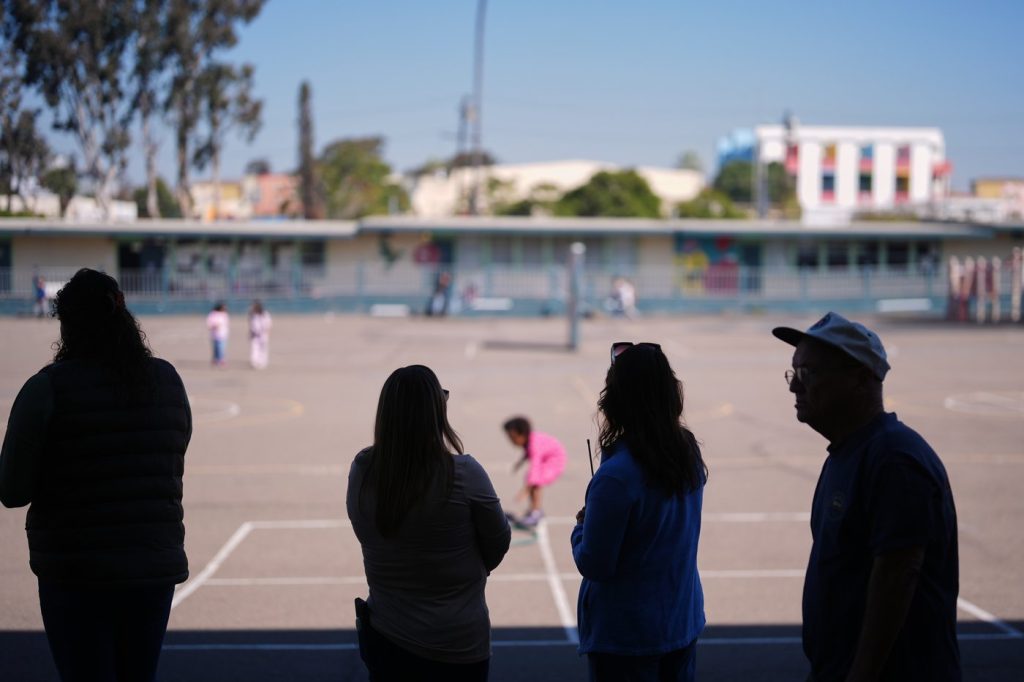Across the United States, schools are witnessing significant declines in enrollment among students from immigrant families. This trend reflects broader issues within immigration policy, particularly during the time of President Donald Trump’s strict immigration measures. In several cases, these declines can be attributed to deportations, voluntary returns to home countries, or families relocating within the U.S.
In many districts, a primary reason for the drop in immigrant student enrollment is the decrease in families arriving from abroad. As apprehensions at the U.S. border have lessened, school administrators, both in urban centers and rural areas, report having fewer newcomer students than in previous years. For instance, in Miami-Dade County Public Schools, the number of newly arrived students has plummeted from nearly 14,000 last year to around 2,550. This significant decrease has resulted in a budget shortfall of approximately $70 million, forcing district officials to find ways to balance finances amid reduced enrollment.
Luisa Santos, a school board member and a former immigrant herself, lamented the decline, noting the essential role public schools played in her life as a child. She reflected on the opportunities American schools provided to her, highlighting the unfortunate impact of the current immigration climate on incoming families.
In Albertville, Alabama, Superintendent Bart Reeves expressed concerns about the impact of reduced enrollment on staffing, predicting that budget cuts would require the elimination of about 12 teaching positions. The town has experienced growth within its Hispanic population, primarily attracted by local poultry processing jobs, but this year’s newcomer academy at a local high school has not seen any new students enroll due to border closures.
Some immigrant families are choosing to self-deport, as illustrated by the story of Edna, a 63-year-old from El Salvador who took in seven children from a friend detained on immigration charges. The children eventually flew back to Guatemala to reunite with their mother, leaving behind their lives, schools, and friends in Florida. The impact on these families can be profound, as they adjust to life in their home countries, often without the educational structure they previously had in the U.S.
Similar patterns of declining numbers of new immigrant students are being observed nationwide. For instance, Denver Public Schools enrolled only 400 new immigrant students over the summer, a stark contrast to the 1,500 registered the previous summer. Waukegan Community Unified School District in Illinois reported a decline of 100 students, while the Houston Independent School District closed the Las Americas Newcomer School due to insufficient enrollment, which dropped to just 21 students.
In Chelsea, Massachusetts, traditionally known for its influx of new immigrants, the numbers have also dwindled significantly. The school district, which typically welcomed many newcomers, saw only 152 new students enroll this year compared to 592 the prior year. Additionally, the district reported that more students are withdrawing, with a portion returning to their countries, partly due to increased visibility of Immigration and Customs Enforcement (ICE) operations in the area.
Educators are growing increasingly concerned about the long-term effects of this decline in enrollment among immigrant students. Principal Fernando Hernandez from San Diego’s Perkins K-8 school noted that many of his students come from diverse Latin American backgrounds but has yet to enroll any newcomer students this school year. He emphasized the importance of school for social interaction and emotional growth, likening the current situation to the isolation experienced during the pandemic.
Natacha, a parent from Venezuela, shared her own fears of immigration enforcement while she continues to send her daughters to school. The uncertainty surrounding immigration status and enforcement creates a pervasive atmosphere of anxiety for many families, further contributing to the decrease in enrollment among immigrant students across the nation.
This ongoing reduction in immigrant student enrollment raises concerns about not only the academic progress of these students but also their overall emotional and social development. Schools that have historically been enriched by diverse student populations are now grappling with the implications of these changes, seeking ways to provide support amid challenging circumstances.










